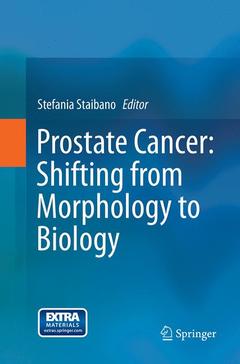Description
Prostate Cancer: Shifting from Morphology to Biology, Softcover reprint of the original 1st ed. 2013
Shifting from Morphology to Biology
Coordinator: Staibano Stefania
Language: English
Subjects for Prostate Cancer: Shifting from Morphology to Biology:
Publication date: 04-2017
Support: Print on demand
Publication date: 09-2013
296 p. · 15.5x23.5 cm · Hardback
Description
/li>Contents
/li>Comment
/li>
The aim of this book will be to contribute to the education of a new generation of experts in urology, molecular biology, pathology and oncology, offering them sufficient knowledge in basic and translational research to be fluency in the web of interacting networks playing a role in prostate cancer development, progression, metastasis and drug-resistance.The volume will cover the latest innovative researches in prostate cancer, with particular emphasis to the state-of-the-art analysis technologies that are essential for the accurate identification of molecular targets for disease diagnosis, molecular mechanisms of tumorigenesis, markers for susceptibility, molecular-based prognostic prevision, characterization of biomarkers of drug efficacy and drug resistance, validation of new therapeutics and diagnostics. Current advancements on the intersecting data concerning transcriptomes, proteomes, the molecular techniques referred as "omes", will be reported and discussed.
Each chapter will prevede different levels of reading: brief introduction, main test and conclusions
Detailed schemes of molecular pathways at the end of each chapter (where appropriate)
The "dynamic" schemes of molecular pathways are available on the extra.springer.com website
The most important references cited in each chapter will be marked in the reference section
Includes supplementary material: sn.pub/extras
These books may interest you

Metastasis of Prostate Cancer 216.90 €



